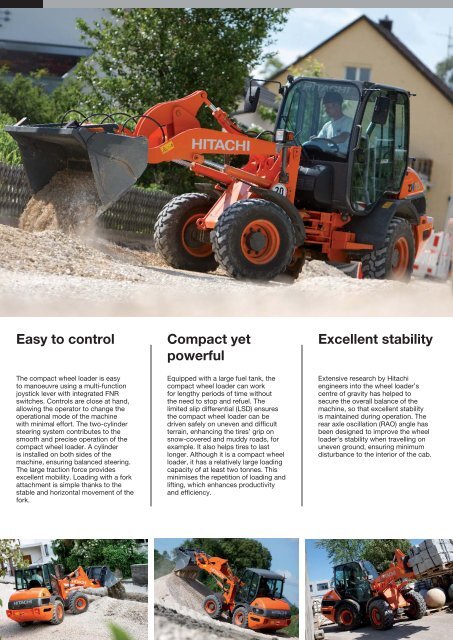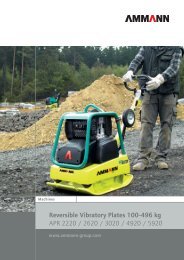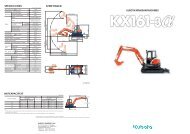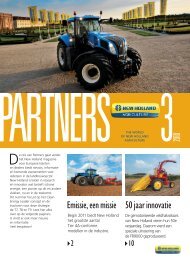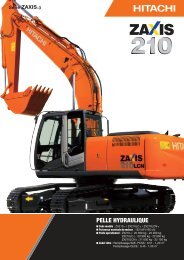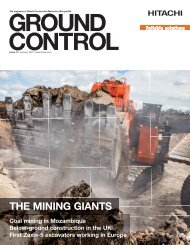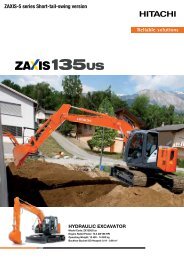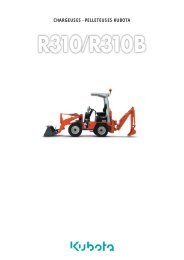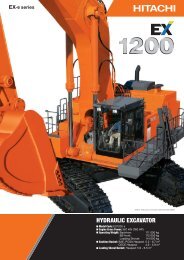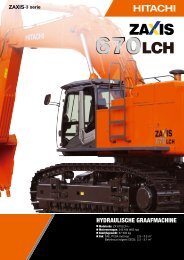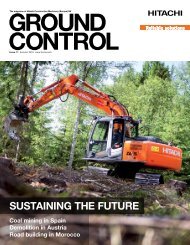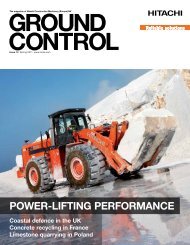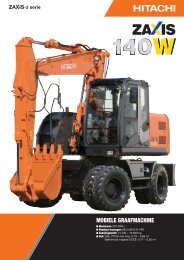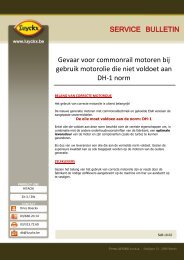pdf brochure - Hitachi Construction Machinery Europe
pdf brochure - Hitachi Construction Machinery Europe
pdf brochure - Hitachi Construction Machinery Europe
You also want an ePaper? Increase the reach of your titles
YUMPU automatically turns print PDFs into web optimized ePapers that Google loves.
Easy to control<br />
The compact wheel loader is easy<br />
to manoeuvre using a multi-function<br />
joystick lever with integrated FNR<br />
switches. Controls are close at hand,<br />
allowing the operator to change the<br />
operational mode of the machine<br />
with minimal effort. The two-cylinder<br />
steering system contributes to the<br />
smooth and precise operation of the<br />
compact wheel loader. A cylinder<br />
is installed on both sides of the<br />
machine, ensuring balanced steering.<br />
The large traction force provides<br />
excellent mobility. Loading with a fork<br />
attachment is simple thanks to the<br />
stable and horizontal movement of the<br />
fork.<br />
Compact yet<br />
powerful<br />
Equipped with a large fuel tank, the<br />
compact wheel loader can work<br />
for lengthy periods of time without<br />
the need to stop and refuel. The<br />
limited slip differential (LSD) ensures<br />
the compact wheel loader can be<br />
driven safely on uneven and difficult<br />
terrain, enhancing the tires’ grip on<br />
snow-covered and muddy roads, for<br />
example. It also helps tires to last<br />
longer. Although it is a compact wheel<br />
loader, it has a relatively large loading<br />
capacity of at least two tonnes. This<br />
minimises the repetition of loading and<br />
lifting, which enhances productivity<br />
and efficiency.<br />
Excellent stability<br />
Extensive research by <strong>Hitachi</strong><br />
engineers into the wheel loader’s<br />
centre of gravity has helped to<br />
secure the overall balance of the<br />
machine, so that excellent stability<br />
is maintained during operation. The<br />
rear axle oscillation (RAO) angle has<br />
been designed to improve the wheel<br />
loader’s stability when travelling on<br />
uneven ground, ensuring minimum<br />
disturbance to the interior of the cab.


